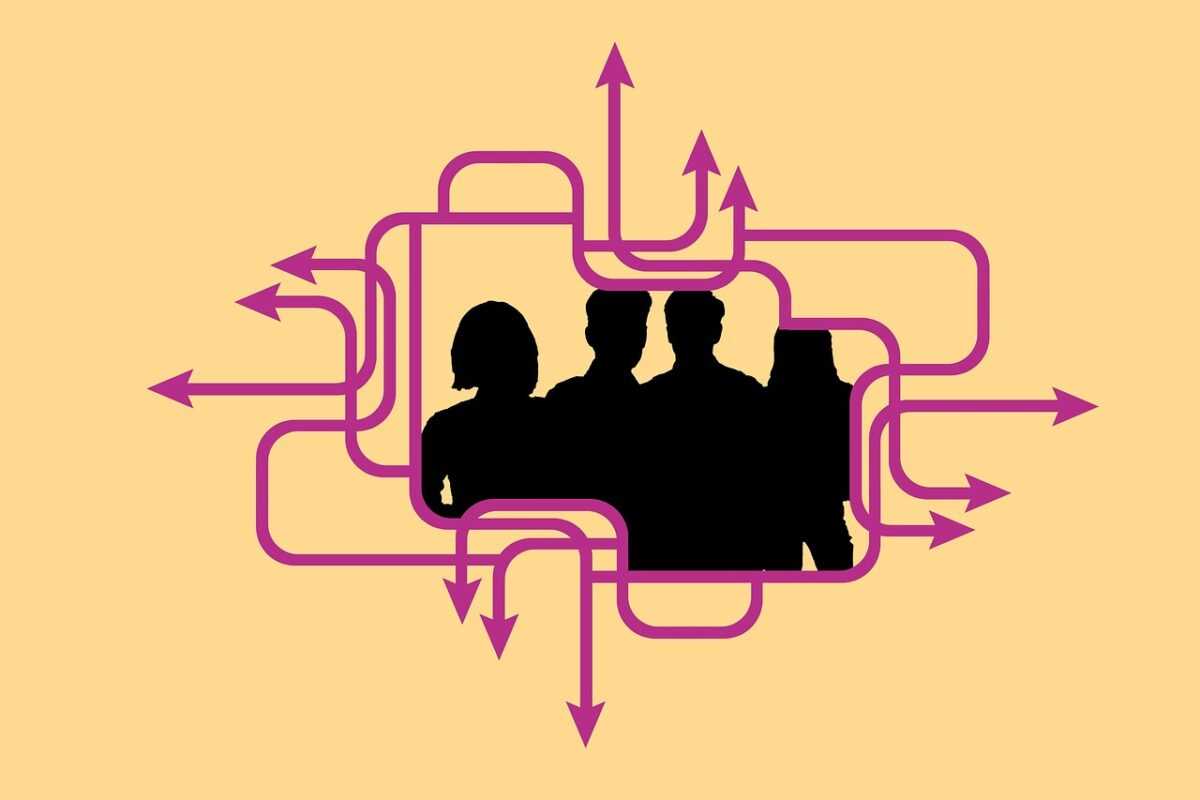Sacrifice of tokens by intentional elimination establishes a verifiable commitment that secures network agreement through economic expense. This approach requires participants to irrevocably remove assets, ensuring their active involvement is backed by tangible cost rather than mere computational effort.
The process involves sending tokens to an unspendable address, effectively destroying their value and demonstrating genuine stake in the system’s integrity. Such destruction-based protocols transform token sacrifice into a cryptographic signal of trustworthiness, deterring malicious behavior by imposing real financial penalties.
By leveraging the economic principle that costly actions are less likely to be faked, this method aligns participant incentives with overall security objectives. The irreversible nature of asset elimination guarantees commitment authenticity, making it a powerful alternative to energy-intensive or hardware-dependent validation techniques.
Proof of Burn: Destruction-Based Consensus
The mechanism relies on an economic sacrifice where participants irrevocably send tokens to an inaccessible address, demonstrating their commitment to network security. This irreversible act signals trustworthiness by exchanging liquid assets for the right to validate transactions, creating a cost-bound guarantee of honest behavior.
This approach introduces a destruction-based validation layer that substitutes traditional resource-heavy computations with token elimination as a proof of stakeholder dedication. By permanently removing tokens from circulation, it aligns incentives toward long-term network stability without excessive energy consumption.
Economic Foundations and Commitment Dynamics
Economic theories underpin this model through the concept of sunk costs; validators willingly forfeit assets, embedding a tangible financial stake in system integrity. The initial sacrifice functions as collateral, deterring malicious actions since any deviation threatens the value of their lost tokens.
Such commitment mechanisms reduce the risk of attacks by increasing the opportunity cost of dishonest participation. For example, in Slimcoin’s implementation, miners burn coins to obtain mining privileges proportionally tied to their destroyed balance, effectively weighting influence based on verifiable token loss.
Technical Architecture and Token Elimination Process
The protocol requires participants to transfer tokens into “eater” addresses devoid of private keys, ensuring permanent removal from circulation. This technical step is essential to confirm authenticity since only genuine sacrifice can grant validation rights within the network’s distributed ledger.
- Tokens sent to these addresses are cryptographically provable through transaction history.
- The destruction event becomes an immutable record on-chain, serving as transparent evidence of commitment.
- This method eliminates risks linked with off-chain agreements or centralized trust assumptions.
Comparative Analysis With Alternative Validation Techniques
Compared to computationally intensive alternatives like Proof-of-Work, this token destruction paradigm offers an energy-efficient solution while maintaining economic deterrence against bad actors. Unlike staking systems requiring lock-up periods without actual asset loss, here the sacrifice is definitive and publicly verifiable.
In experimental networks such as Counterparty, burning bitcoins grants issuance rights for new assets–demonstrating how destruction-based models can integrate with existing blockchains and enable decentralized resource allocation based on proven financial input rather than computational power alone.
Potential Risks and Mitigation Strategies
The main vulnerability arises if burned tokens fail to represent adequate economic weight relative to potential rewards from misbehavior. To counteract this imbalance, dynamic adjustment algorithms have been proposed which calibrate required sacrifices according to network conditions and attack probabilities.
- Implementing time-weighted burn metrics increases resistance against short-term manipulations.
- Diversifying token types accepted for destruction enhances robustness across heterogeneous ecosystems.
- Combining this model with secondary reputation systems fortifies overall participant accountability beyond pure financial loss.
Experimental Insights and Future Directions
Research continues exploring hybrid mechanisms blending token elimination with other proofs validating identity or resource contribution. Laboratory simulations reveal that calibrated sacrifices optimize validator diversity while limiting centralization risks inherent in purely wealth-dependent methods.
A promising avenue lies in programmable burns where conditional destruction occurs upon specific triggers or milestones–enabling adaptive consensus frameworks responsive to real-time network metrics. These controlled experiments invite further empirical verification but suggest scalable pathways toward sustainable blockchain governance rooted in demonstrable economic commitment.
Mechanics of Proof of Burn
Tokens are permanently removed from circulation through an irreversible process that demonstrates a participant’s commitment to the network. This deliberate destruction acts as a form of economic sacrifice, signaling genuine investment without requiring continuous resource expenditure like energy or hardware. The inherent cost associated with this token elimination aligns incentives by ensuring only actors willing to forfeit assets can influence transaction validation.
The method relies on participants sending tokens to an address designed to be unspendable, effectively locking them away forever. This action embodies a verifiable pledge, as observers can confirm the disappearance of these tokens from the supply. Such irreversible destruction substitutes traditional computational work or stake, creating a unique mechanism where commitment is quantified by the magnitude of sacrificed value.
Stepwise Process and Economic Implications
The procedure begins with users choosing to allocate part of their holdings towards validation rights by dispatching tokens to a burn address. The protocol rewards this engagement proportionally, granting privileges such as block creation opportunities or voting power in governance. Economic theory supports this model since it imposes a sunk cost that deters malicious behavior; attempts at manipulation would require repeated sacrifices, reducing feasibility.
This approach contrasts with resource-intensive alternatives by embedding trust within economic loss rather than physical consumption. It also introduces predictable inflation control mechanisms because burned tokens reduce overall supply, potentially increasing scarcity and long-term value retention for remaining holders. However, careful calibration is essential: excessive burning could hamper liquidity and network utility.
- Token destruction verification: Blockchain explorers and nodes confirm transactions sent to predefined non-spendable addresses.
- Allocation of privileges: Burnt quantity translates into proportional influence or rewards based on predetermined algorithmic formulas.
- Security enhancement: Costly sacrifice discourages Sybil attacks by raising entry barriers for validators.
Experimental case studies such as Slimcoin illustrate practical deployment where participants burn coins upfront to gain mining rights, substituting hardware-based proof mechanisms. Results demonstrate measurable reductions in energy consumption while maintaining robust network integrity. Another example includes Counterparty’s token-burning events used both for issuance control and community signaling, showcasing versatility in application contexts.
The underlying scientific principle parallels thermodynamic irreversibility: once tokens are destroyed, they cannot re-enter circulation, analogous to entropy increase in closed systems. This ensures permanent economic impact reflecting participant intent without ongoing operational costs. Future investigations might explore optimal sacrifice-to-reward ratios, balancing security benefits against potential liquidity constraints while evaluating adaptive protocols responsive to market dynamics.
Burned Tokens Verification Process
Verification of token destruction requires cryptographic confirmation that a specific quantity of tokens has been irreversibly removed from circulation. This involves validating a publicly accessible commitment transaction on the blockchain, which signals the intentional sacrifice of economic value. By examining the unspendable output addresses or specialized burn addresses, observers can confirm that these tokens cannot re-enter the economy, ensuring an authentic cost has been paid.
Each burn event encodes a proof embedded within the transaction data, detailing amount and source of destroyed tokens. Nodes independently verify this by cross-referencing ledger states to exclude double-counting or replay attempts. The transparency inherent in such destruction-based mechanisms provides strong guarantees about commitment authenticity, as only genuine token holders with vested stakes can afford the economic sacrifice required for validation.
Stepwise Verification and Technical Details
The procedure generally follows several discrete steps:
- Identification of burn transactions via predetermined address formats or OP_RETURN script outputs.
- Calculation of total burned supply against circulating supply metrics to maintain system integrity.
- Confirmation through consensus rules that no spent tokens return from burned outputs, ensuring irreversible removal.
- Validation of cryptographic signatures proving ownership prior to token destruction, solidifying commitment legitimacy.
This methodology has been rigorously tested in networks like Counterparty and Slimcoin, where transparent token burning underpins issuance controls and fair resource allocation. By integrating these verifications into protocol-level validations, blockchains achieve resilient security models based on measurable economic costs rather than purely computational proofs.
Understanding the subtleties behind token elimination also reveals potential vulnerabilities; for example, incomplete burns due to improper scripting or off-chain misreporting can undermine trust in the mechanism. Continuous experimentation with multi-signature burns and time-locked commitments offers promising avenues to enhance robustness while preserving incentive alignment rooted in tangible financial forfeiture.
Security Risks in Networks Utilizing Token Sacrifice Mechanisms
Networks that rely on token destruction as a form of commitment inherently expose participants to significant economic vulnerabilities. The act of sacrificing tokens to validate transactions or secure the system imposes a direct financial cost, which may be exploited by adversaries through strategic manipulations. Understanding these risks requires analyzing how the irreversible loss of assets can influence participant behavior and network stability.
The fundamental security challenge lies in balancing the economic deterrent provided by token sacrifice against potential attacks that leverage this mechanism’s unique incentives. Unlike traditional resource-based validation methods, destruction-oriented models depend on participants willingly incurring costs, which opens avenues for sophisticated attack vectors such as double-spending attempts or bribery schemes targeting high-stake validators.
Economic Incentives and Attack Vectors
By requiring an explicit economic sacrifice to demonstrate commitment, networks create a cost barrier designed to prevent malicious actions. However, if the cost of token destruction is insufficient relative to the potential gains from fraudulent activity, attackers might find it profitable to exploit the system. For example, a miner with substantial tokens at their disposal could repeatedly sacrifice portions of their holdings to attempt rewriting transaction history or destabilizing consensus outcomes.
Moreover, the irreversibility of token elimination introduces risk for honest participants who may suffer collateral losses during network disruptions or forks. This exposure can reduce overall network participation and lead to centralization pressures where only entities with deep pockets can afford repeated sacrifices without risking insolvency.
Manipulation through Strategic Commitment
The requirement for proof via destruction creates an opportunity for strategic manipulation known as “sacrifice grinding,” where validators selectively destroy tokens at moments most advantageous for influencing block formation or finality timings. Such tactics undermine randomness assumptions crucial for fair leader election and introduce predictability exploitable by colluding parties.
- Case Study: In experimental deployments of burn-based protocols, researchers observed validators timing their sacrifices around network latency windows to maximize influence over consensus decisions.
- Mitigation Techniques: Introducing randomized delay functions or multi-phase commitment protocols reduces predictability but increases protocol complexity and overhead.
Irreversible Asset Loss and Network Resilience
The permanent destruction of tokens constitutes a non-recoverable economic impact that can deter long-term participation if perceived as excessively punitive. Networks must calibrate sacrifice thresholds carefully; overly stringent costs discourage involvement, while too lenient requirements fail to disincentivize attacks effectively. This trade-off influences the system’s resilience under stress conditions such as coordinated attacks or sudden participant exits.
An additional concern is the accumulation effect: extensive token elimination reduces circulating supply, potentially inflating remaining holders’ stakes unevenly and altering incentive structures unpredictably over time. Sustained monitoring of these dynamics is essential to maintain balanced governance and avoid concentration risks detrimental to decentralization goals.
Conclusion: Balancing Security Through Economic Design
The security profile of networks employing token sacrifice mechanisms demands meticulous economic modeling backed by empirical data from live testbeds and simulations. Robust defenses emerge from harmonizing destruction costs with realistic attacker profit calculations while incorporating adaptive protocol features that limit exploitative behaviors without deterring honest participation.
Future research should focus on iterative experimentation combining game-theoretic analysis with real-world measurements, enabling progressive refinement of sacrifice parameters tailored to diverse blockchain environments. By framing validation as an evolving scientific inquiry into optimal economic commitment strategies, developers can enhance both trustworthiness and sustainability in these innovative digital systems.
Use Cases for Proof of Burn
Allocating a token through intentional destruction establishes a unique method to demonstrate commitment within distributed systems. This approach guarantees that participants have incurred an economic cost, thereby validating their stake in the network’s integrity. By irrevocably sacrificing tokens, actors prove their genuine interest and deter malicious behavior without relying on energy-intensive computations or hardware investments.
One practical application lies in bootstrapping new blockchain networks. Instead of traditional resource-heavy mechanisms, initial participants can exchange established tokens by burning them to receive native assets on the emerging platform. This technique ensures a fair distribution aligned with tangible economic sacrifice, effectively preventing Sybil attacks while fostering long-term dedication to network health.
In decentralized governance models, token elimination serves as a powerful tool to align incentives. Participants who destroy tokens signal their intent to influence decision-making processes seriously, since this irreversible action reflects a measurable cost. Such mechanisms reduce frivolous voting and enhance the quality of consensus-driven choices by embedding economic weight into governance participation.
Cross-chain interoperability offers another fertile ground for experimentation with this mechanism. Users can commit tokens from one ecosystem by eliminating them to mint equivalent representations on another chain, facilitating secure asset transfers without trusted intermediaries. This transaction process relies on the demonstrable sacrifice of value rather than trust assumptions, creating transparent bridges between disparate platforms.
Furthermore, scarcity creation via controlled token removal supports deflationary economic models that potentially increase long-term value retention. When integrated into reward schedules or incentive programs, these strategies encourage holders to lock in value through destruction acts that strengthen network security indirectly. Careful calibration of such mechanisms can balance supply dynamics and participant motivation effectively.
Conclusion: Evaluating Token Sacrifice Mechanisms in Consensus Protocols
Economic expense through token destruction offers a unique approach to securing decentralized networks by directly aligning participant incentives with system integrity. Unlike stake-based validation methods, where capital is locked but not eliminated, this model requires irreversible sacrifice, creating an explicit cost that discourages malicious behavior and reinforces trust.
The trade-offs between this approach and alternatives such as Proof of Stake or Proof of Work revolve around efficiency, environmental impact, and long-term sustainability. While the deliberate token elimination imposes a tangible financial burden on validators, it simultaneously simplifies resource allocation by removing complex hardware dependencies or collateral management. For instance, experimental implementations have demonstrated lower energy consumption compared to computationally intensive mining yet demand continuous economic commitment from participants.
Key Technical Insights and Future Directions
- Token destruction as a security mechanism: The irreversibility of the sacrifice amplifies network resilience against Sybil attacks by ensuring that every validation attempt involves a measurable economic loss.
- Cost dynamics: Unlike locked capital models, the permanent removal of tokens imposes sustained deflationary pressure which could enhance token value but also risks reduced liquidity if not balanced properly.
- Comparative efficiency: Resource expenditure shifts from hardware power draw to monetary units, creating new vectors for optimizing validator participation through dynamic fee adjustments or staged burn rates.
- Experimental adaptability: Layered hybrid protocols combining destruction-based mechanisms with traditional staking offer promising avenues for reducing costs while maintaining high security thresholds.
The path forward involves rigorous experimentation with adaptive sacrifice models that calibrate the economic cost against network scale and tokenomics. Researchers should investigate variable burn parameters responsive to transaction throughput or validator performance metrics to optimize both security and usability. Additionally, integrating transparent audit trails for destroyed tokens can reinforce trust while enabling granular governance decisions based on empirical data.
This framework invites further exploration into how direct economic forfeiture reshapes incentive alignment within distributed ledger technologies. By methodically testing these variables under controlled conditions and live deployments, developers and analysts can refine mechanisms that balance financial deterrence with sustainable growth–charting a course toward innovative protocols that merge experimental rigor with practical blockchain evolution.








